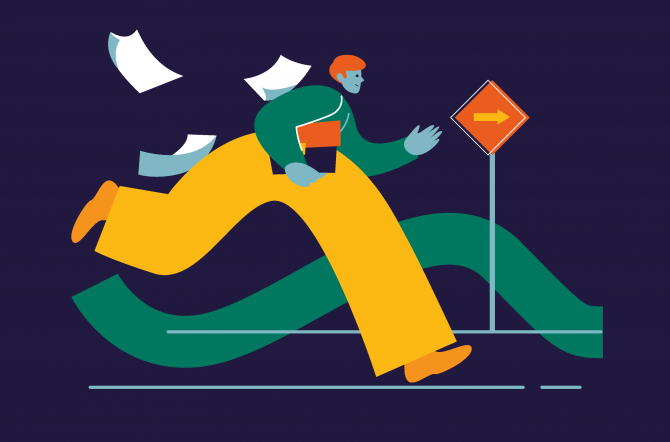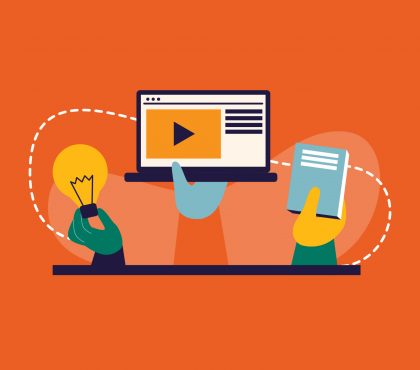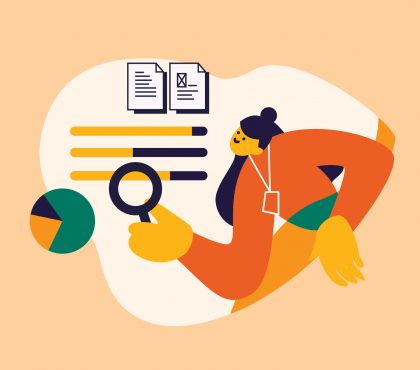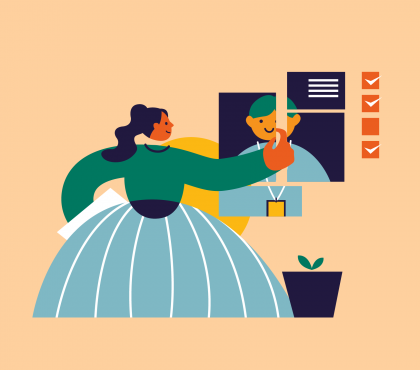Learning agility isn’t a one-size-fits-all concept; instead, it’s the teamwork of five distinct dimensions that shape an individual’s capacity to learn, unlearn, and relearn. These 5 dimensions go beyond the superficial and delve into the very essence of what it means to be a flexible, resilient, and forward-thinking learner.
Throughout this journey, we’ll explore each of these dimensions in depth, uncovering their unique contributions to the learning process and discovering how they interact to create a comprehensive framework for growth.
What Is Learning Agility?
How frequently do you encounter scenarios where you lack a clear course of action, yet possess the determination to attempt resolving it? This ability is known as learning agility. Each time you show a readiness to use previous knowledge and acquire skills to make it through circumstances, you’re showcasing your capacity for agility.
According to Mr. Warner Burke, Professor of Psychology and Education at Teachers College, Columbia University, half of all leaders fail at their jobs. Why? Because these leaders lack learning agility.
5 Dimensions of Learning Agility
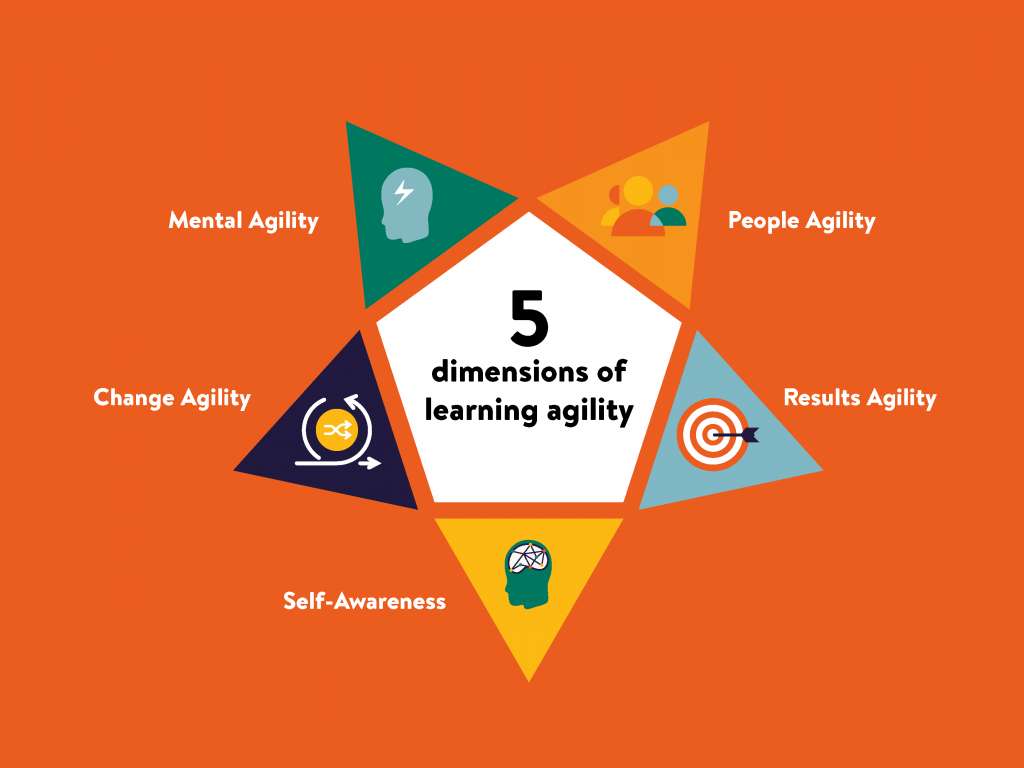
Learning agility is crucial in today’s rapidly evolving world, where adaptability and continuous learning are paramount for success. It includes acquiring new skills quickly, adjusting to new situations, and effectively applying knowledge in various contexts. There are several dimensions of learning agility that individuals can cultivate to enhance their ability to thrive in dynamic environments. Here are five key dimensions:
#1 Mental Agility
Mental agility involves the capacity to think critically, analyze complex problems, and approach challenges from multiple perspectives. Individuals with strong mental agility can quickly grasp new concepts, process information, and make well-informed decisions. They are willing to explore innovative solutions and adapt their thinking patterns when faced with uncertainty. Mental agility also encompasses a curiosity to explore new ideas and a hunger for intellectual growth.
#2 People Agility
People agility focuses on effective interpersonal interactions and collaboration. It involves the ability to connect with diverse individuals, build relationships, and communicate ideas clearly. People-agile individuals are skilled at active listening, empathizing with others, and adapting their communication styles to various audiences. They can work well in teams, navigate conflicts, and leverage team members’ strengths to achieve shared goals.
#3 Change Agility
Change agility pertains to an individual’s ability to embrace and navigate change with a positive attitude. It involves being comfortable with ambiguity and uncertainty and quickly adjusting to new circumstances. Change-agile individuals view change as an opportunity for growth rather than a setback. They are resilient, open to new experiences, and able to pivot their strategies when circumstances evolve.
#4 Results Agility
Results agility is the dimension that emphasizes the practical application of learning. Individuals with strong results agility can turn knowledge and ideas into action that yields tangible outcomes. They set clear goals, develop effective action plans, and remain committed to achieving their objectives. These individuals also recognize the importance of continuous improvement and are willing to adjust their approaches based on feedback and real-world outcomes.
#5 Self-Awareness
Self-awareness is foundational to learning agility as it involves recognizing one’s strengths, weaknesses, values, and motivations. Individuals with high self-awareness can reflect on their experiences, identify areas for improvement, and actively seek opportunities for growth. This dimension also includes a willingness to receive constructive criticism, adapt behaviors accordingly, and maintain a growth-oriented mindset.
Learning Agility Examples
Learning agility is a multifaceted skill that involves being able to quickly adapt to new situations, learn from experiences, and apply insights to novel challenges. To better understand this concept, let’s explore some practical learning agility examples that highlight the different dimensions of learning agility:
#1 Cognitive Flexibility
Imagine a software developer who has primarily worked with a specific programming language for years. Suddenly, their company adopts a new technology stack. Instead of resisting the change, they proactively seek out resources to learn the new programming language, adapting their existing knowledge to the new context. Their ability to switch gears and learn a different language showcases cognitive flexibility.
#2 Emotional Intelligence
A manager faces a conflict within their team. Instead of responding with defensiveness or anger, they take a moment to empathetically listen to each team member’s perspective. They learn from this experience and implement strategies to foster better communication and collaboration, demonstrating emotional intelligence and the capacity to learn from interpersonal dynamics.
#3 Willingness to Take Risks
An entrepreneur decides to launch a new product in an unfamiliar market. Despite the uncertainty, they recognize that taking calculated risks is a part of growth. They embrace the challenge, gather insights from market research and feedback, and adjust their strategy based on what they learn. Their willingness to step into the unknown underscores their learning agility.
How to leverage the power of Learning Agility
Leveraging learning agility is a strategic approach that involves consciously applying your ability to learn, adapt, and grow in various contexts. Here are some steps you can take to effectively leverage your learning agility:
#1 Embrace a Growth Mindset
Start with the belief that your abilities and intelligence can be developed through effort and learning. This mindset encourages you to view challenges as opportunities for growth rather than obstacles.
#2 Seek Diverse Experiences
Put yourself in situations that expose you to new challenges and perspectives. Volunteer for cross-functional projects, take on new responsibilities, and seek out experiences outside your comfort zone.
#3 Be Curious and Ask Questions
Grow a sense of curiosity and a desire to understand. Don’t hesitate to ask questions, even if they seem basic. This shows your willingness to learn and your commitment to expanding your knowledge.
#4 Experimentation
Don’t be afraid to experiment with new approaches and solutions. Trying different methods allows you to learn what works best in different situations and refine your strategies over time.
Consider how F.Learning Studio uses animation to produce dynamic, effective, and entertaining training videos for its customers. The studio redefines the learning experience by seamlessly integrating animation into its training content, making it more accessible, comprehensible, and pleasant for learners across multiple industries.
Final words
Through this exploration of the 5 Dimensions of Learning Agility, we’ve delved into the heart of being an agile learner, unearthing a rich tapestry of abilities that empower us to adapt, innovate, and excel. Each dimension serves as a unique thread in the fabric of our growth. They form a cohesive framework that propels us forward, allowing us to navigate complexities, pivot gracefully, and transform challenges into opportunities.

